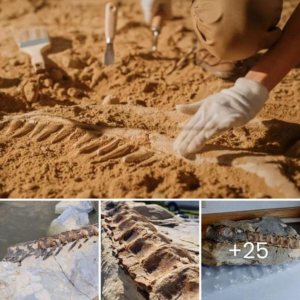The Baigong Pipes, discovered near Mount Baigong in Qinghai Province, China, have intrigued researchers and sparked numerous theories since their discovery. These ancient metallic pipe-like structures, embedded in rocks and connecting to a saline lake, have raised questions about their origin and purpose. Were they part of an advanced ancient research center, or do they suggest extraterrestrial involvement? This article explores the mystery surrounding the Baigong Pipes and the various hypotheses proposed to explain their existence.

The Discovery and Initial Observations

In 2002, researchers were stunned to find a series of well-arranged metallic pipes embedded in rocks near Mount Baigong, also known as White Mountain. These pipes, located next to Qadim Basin at the foothills of the Himalayan highlands, connect to Lake Toson Hu, a saline lake approximately 300 feet away. The area is largely inhospitable, with scant evidence of human settlement, making the discovery even more perplexing.

The most significant find was a 50-60 meter high pyramid-like protrusion surrounded by a network of pipes leading to the lake. The protrusion has three entrances, two of which have collapsed, while the third leads to a cave with pipes embedded in its floor and walls. The complexity and organization of these structures baffled researchers, leading to speculation about their purpose and origin.
Theories and Speculations

The Baigong Pipes have sparked numerous theories, ranging from natural phenomena to evidence of advanced ancient civilizations or extraterrestrial activity. One of the more conventional explanations is that the pipes are the result of natural processes, such as fossilized tree roots undergoing diagenesis. However, this theory has been challenged by the composition and arrangement of the pipes.

Radiocarbon dating by the Beijing Institute of Geology suggests that the pipes were smelted around 150,000 years ago, which predates known human habitation in the area. This has led some researchers to propose that the pipes were created by a prehistoric human civilization using lost techniques. Others, like Yang Ji from the Chinese Academy of Social Sciences, have suggested that the pyramid and pipes may have been constructed by intelligent beings, possibly extraterrestrials.
Scientific Analysis and Challenges

The pipes were analyzed and found to contain ferric oxide, silicon dioxide, and calcium oxide, with 8% of the material unidentified. This composition indicates that the pipes are thousands of years old. Additionally, some of the pipes were found to be highly radioactive, adding to the mystery.

Despite these findings, the hypothesis that the pipes are fossilized tree roots persists. In 2003, Xinmin Weekly reported that plant detritus and tree rings were found in the pipes, suggesting a natural origin. However, this explanation has not been definitively proven, and the mystery remains unsolved.
The Baigong Pipes continue to intrigue researchers and spark debate. Whether they are evidence of an advanced ancient civilization, an extraterrestrial facility, or a natural phenomenon, their origin and purpose remain a mystery. Further scientific investigation is needed to uncover the truth behind these enigmatic structures. Until then, the Baigong Pipes will remain one of the most fascinating and unexplained archaeological discoveries in history.





